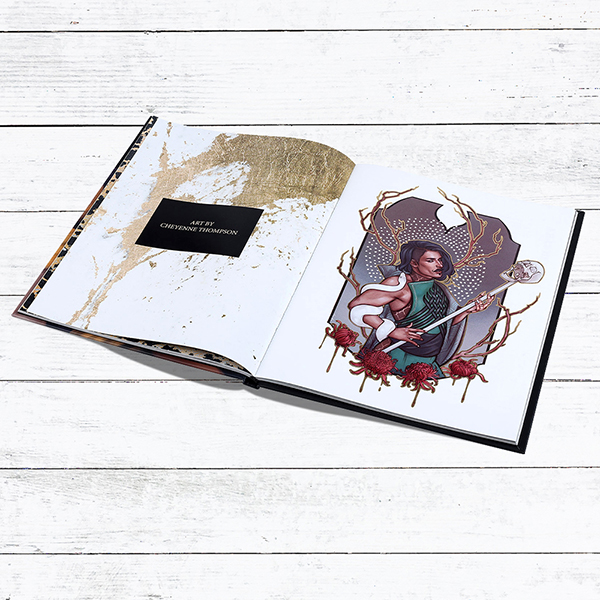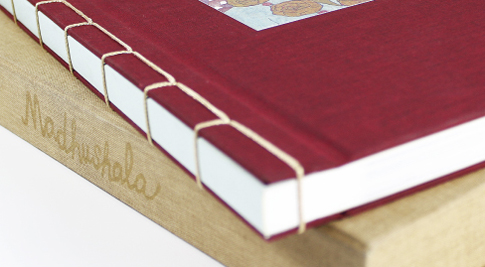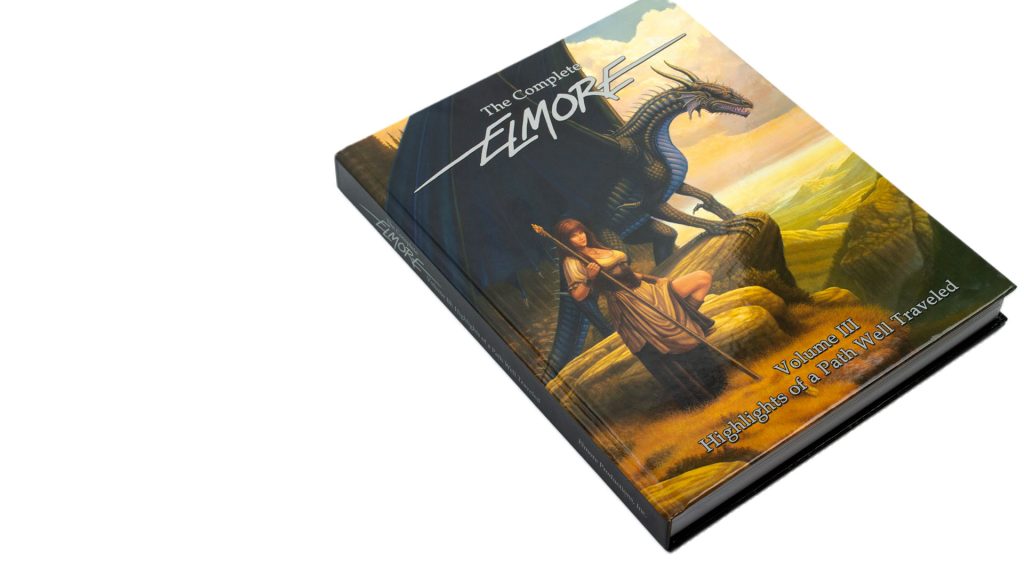Pro Prepress Tips for Flawless art book Printing
Recognizing the Process Behind High-Quality Art Book Printing for Art Fanatics
When it pertains to high-quality art book printing, understanding the details of the process can boost your gratitude for the end product. You could not recognize just how vital paper option and ink options are to the vibrancy of art work. Each element plays a substantial role in accomplishing the desired impact. As you discover the various elements of art book printing, you'll reveal insights that might change your perspective on art conservation and discussion.
The Importance of Paper Choice in Art Book Printing
When it pertains to art book printing, the selection of paper can make or damage the end product. You want your art work to beam, and the appropriate paper enhances color vibrancy and detail. Think about aspects like weight, appearance, and finish; these elements considerably affect exactly how visitors view your job.
For circumstances, a larger supply shares quality and resilience, while a textured surface can add depth to images. Smooth paper is outstanding for comprehensive reproductions, enabling fine lines and subtle shades to appear crisp.
Don't ignore the paper's brightness; a brighter sheet can aid shades pop, making your art extra eye-catching. You'll also desire to consider exactly how the paper communicates with inks and whether it can deal with the printing process without deforming or bleed-through. Ultimately, selecting the right paper establishes the phase for your art, guaranteeing it catches the audience's focus equally as you imagined.
Selecting the Right Inks for Dynamic Reproductions
Choosing the appropriate inks is simply as essential as selecting top quality paper to attain lively reproductions in your art book. When you're publishing art work, you want shades that stand out and accurately stand for the initial piece. Go with inks with a high pigment focus; these tend to generate richer and a lot more saturated colors.
You may consider making use of archival inks, which stand up to fading in time, guaranteeing your art book remains as striking as the day it was published. If you're dealing with photos or digitally produced art, pigment-based inks can give a larger shade gamut, improving detail and depth.
Do not forget the coating! Matte and glossy inks can dramatically change the look of your artwork, so believe concerning the look you're aiming to attain - art book. Ultimately, the ideal ink selection complements your paper choice, developing a stunning visual experience for your viewers
The Duty of Color Administration in Publish Quality
Shade management plays a vital duty in achieving high print quality for your art book. It ensures that the shades you see on your display equate accurately to the printed web page. Without reliable shade monitoring, your vibrant artworks may appear boring or altered, threatening your imaginative vision.
Next, utilize color profiles tailored for your printer and paper kind. These accounts lead the printer in duplicating shades properly, minimizing disparities in between digital and printed versions.
When you prepare your documents, take into consideration making use of a shade area like Adobe RGB or CMYK, depending upon your printer's specifications. Always evidence your job, as well; a test print can reveal any kind of possible shade problems prior to the final run. By prioritizing shade administration, you secure the stability of your art, guaranteeing your audience experiences it as you planned.

Understanding Various Binding Strategies
Attaining the best look for your art book goes beyond color administration; binding methods likewise play a significant duty in its general discussion and toughness. You have several alternatives to assess, each with its very own unique features.
If you're aiming for a specialist feel, situation binding offers a strong option with a difficult cover, excellent for showcasing your artwork. On the other hand, best binding gives a flexible spinal column while maintaining prices down, making it a preferred selection for softcover publications.
Spiral binding allows your art book to lay flat, which is fantastic for showing photos without obstruction. Saddle sewing is perfect for smaller click to read brochures, offering a tidy finish without the bulk.
Eventually, the binding strategy you pick should reflect your creative vision and exactly how you desire viewers to involve with your job. Make sure to weigh these choices very carefully to attain the ideal end result for your project.
The Impact of Print Size and Layout on Presentation
While the choice of print size and design may seem additional to material, they considerably influence exactly how your artwork is viewed. The dimensions of your prints can either improve or decrease the effect of your pieces. Larger prints can draw viewers in, allowing them to value detailed information, while smaller sized layouts may need more intimate engagement.

Preservation Methods for Lasting Art Books
To assure your art books stand the examination of time, it's vital to execute reliable preservation techniques. Begin by storing them in a great, dry atmosphere, away from published here direct sunshine and humidity. This protects against fading and warping, maintaining your pages undamaged. Usage acid-free storage boxes or safety sleeves to shield them from dirt and physical Click Here damage.
When handling your publications, always clean your hands or wear cotton gloves to avoid oils and dust moving onto the web pages. Prevent bending or wrinkling the spines; instead, make use of book sustains when displaying them.
For added defense, consider buying archival-quality products for any kind of repairs or enhancements. Consistently check your collection for signs of wear or damage, attending to concerns promptly. By complying with these basic approaches, you can guarantee your art books remain dynamic and easily accessible for several years ahead, preserving their beauty and value for future generations.
Working together With Printers for Ideal Results
When you prepare to publish your art book, selecting the ideal printer is vital to attaining your vision. Clear interaction concerning your assumptions and demands will certainly assist ensure that both you and the printer are on the exact same page. Let's explore how to make this cooperation as smooth and reliable as feasible.
Choosing the Right Printer

Efficient Interaction Strategies
Effective communication is crucial for transforming your art book vision into reality, particularly when teaming up with printers. art book. Beginning by clearly outlining your job's goals, consisting of layout components, recommended materials, and any particular printing methods. Don't think twice to share your ideas and referrals; this aids the printer recognize your aesthetic
Set up regular check-ins to discuss progress and deal with any type of concerns. Use visuals, like mock-ups or samples, to convey your ideas much more efficiently. Be open to comments, as printers typically have useful insights that can improve your project. Finally, maintain a positive partnership by being considerate and satisfied of their know-how. This cooperation will certainly ensure that your art book satisfies your expectations and shines in its last type.
Frequently Asked Inquiries
What Prevail Mistakes to Stay Clear Of in Art Book Printing?
When publishing your art book, avoid usual errors like poor resolution photos, inaccurate color accounts, and overlooking page design. Don't neglect to proofread and double-check information to confirm your last item meets your assumptions.
How Does Digital Printing Differ From Typical Printing Techniques?
Digital printing uses electronic files to produce prints directly, enabling for quicker turnaround and personalization. On the other hand, standard methods entail physical plates, which can be time-consuming and much less flexible for little runs or unique styles.
What Is the Regular Turnaround Time for Art Book Printing?
The regular turnaround time for art book printing differs, but you can expect it to take anywhere from a couple of weeks to several months. Aspects like intricacy, quantity, and printing technique all affect this timeline.
Can I Print a Restricted Version Art Book Economically?
You can print a minimal edition art book economically by choosing cost-effective materials, maximizing print runs, and making use of digital printing choices. Mindful preparation and budgeting will assist you attain top quality without overspending.
What Are the Environmental Factors To Consider in Art Book Printing?
When taking into consideration art book printing, you ought to consider environmentally friendly materials, lasting inks, and energy-efficient procedures (art book). Picking neighborhood printers can also decrease your carbon footprint, making your job both attractive and environmentally responsible